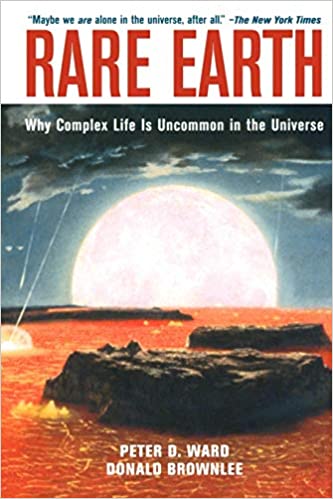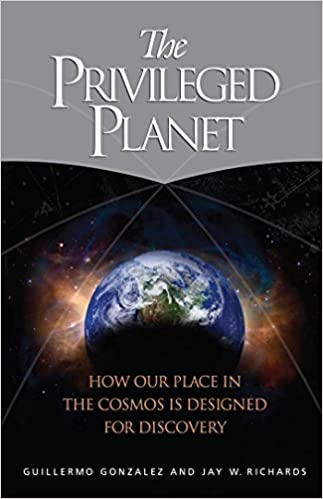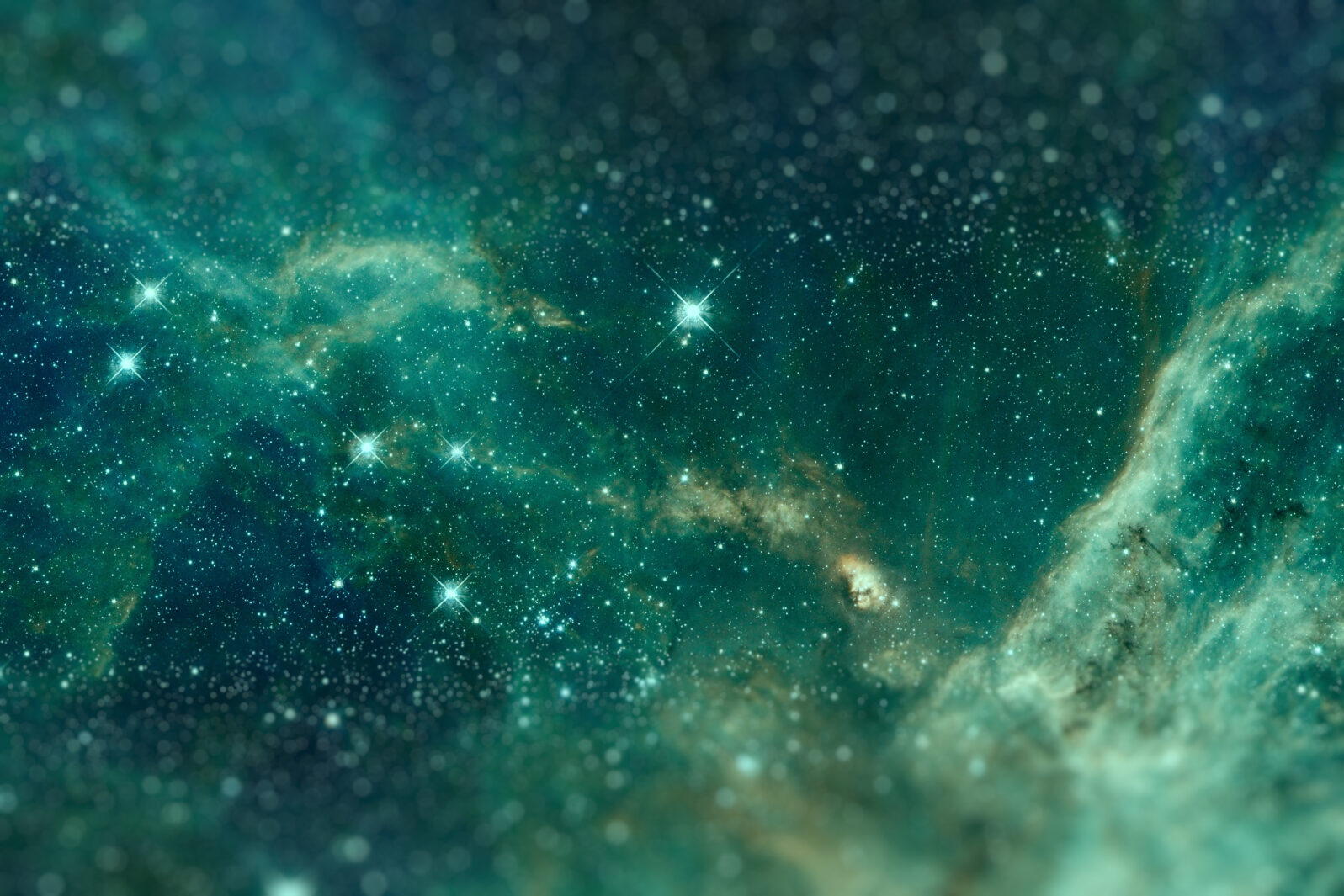Maybe There Are Just Very Few Aliens Out There…
The Rare Earth hypothesis offers science-based reasons that life in the universe is rareRecently, science and science fiction writer Matt Williams has been writing a series at Universe Today on why extraterrestrial intelligences never make contact with us.
Last week, we looked at the hypothesis that, to avoid the heat destruction of their advanced technology, the aliens have put themselves into a digital slumber until the universe cools down.

This week, let’s look at a quite different approach, which Williams outlines in “Beyond “Fermi’s Paradox” IV: What is the Rare Earth Hypothesis?” (July 29, 2020): That is “the possibility that life-bearing planets like Earth are just very rare.” We don’t see aliens because they are very uncommon:
This is what is popularly known as the “Rare Earth Hypothesis,” which argues that the emergence of life and the evolution of complexity require a combination of astrophysical and geological conditions that are simply not common in our Universe. This contradicted previously-held notions by prominent scientists and SETI researchers, who were of the opinion that Earth was typical of rocky planets located throughout the Universe.
Matt Williams, “Beyond “Fermi’s Paradox” IV: What is the Rare Earth Hypothesis?” at Universe Today
As Williams points out, the term “Rare Earth”* was popularized by an influential 2003 book called Rare Earth: Why Complex Life is Uncommon in the Universe. It’s authors are paleontologist Peter Ward and astronomer Donald E. Brownlee at the University of Washington.
The duo questioned a central assumption made by Carl Sagan (1934–1996), Frank Drake and the (and Search for Extraterrestrial Intelligence ’s) iconic Drake Equation: of 1961, that not only are They Out There but there are Lots of Them.
Ward and Brownlee revised their famous Equation and added in factors known to be true of Earth but maybe not easy to find elsewhere and came up with a much lower figure:
For a number of reasons, Matt Williams does not like the Rare Earth hypothesis. Concluding a list, he writes:
On top of all that, scientists have questioned the definition of “habitable zone” in recent years, with some suggesting it could be a lot narrower than previously thought. Other research has indicated that habitable planets could also be found in longer orbits, indicating that HZs are actually wider. It’s also possible that Earth does not represent the pinnacle of habitability and there may be a class of “superhabitable” worlds.
Considerable research has also been dedicated to how our very notion of habitability is based entirely on Earth’s current geological period. At many junctures in the past, atmospheric and climatic conditions were significantly different on Earth than they are today. And yet, these conditions are believed to have been essential to the evolution of life at different stages.
Matt Williams, “Beyond “Fermi’s Paradox” IV: What is the Rare Earth Hypothesis?” at Universe Today
Of course, no one can rule out the possibility that entities that we would not recognize as life but really are life exist in abundance in the universe. For one thing, there are many definitions of “life” as we do know it:
Abstract: Despite numerous and increasing attempts to define what life is, there is no consensus on necessary and sufficient conditions for life. Accordingly, some scholars have questioned the value of definitions of life and encouraged scientists and philosophers alike to discard the project. As an alternative to this pessimistic conclusion, we argue that critically rethinking the nature and uses of definitions can provide new insights into the epistemic roles of definitions of life for different research practices.
– Bich, Leonardo and Green, Sara (2016) Is defining life pointless? Operational definitions at the frontiers of Biology. Synthese. ISSN 1573-0964
But the Drake Equation that is our starting point addresses the question in terms of accepted assumptions about the elements and conditions needed for life. Departing too far from those terms may render the problem both undefinable and unresearchable.
A critic at Futurism points out that life forms are adaptable:
Over millions of years, species have evolved to adapt to their environment. We have fish and other exotic forms of life that can survive under immense pressures within the deepest depths on the ocean floor. We have algae that can survive in boiling temperatures. Then, we have the lovely tardigrades (also known as water bears), which can survive IN THE VACUUM OF SPACE.
So life could thrive in environments much different than that of our own blue marble. On top of this, there are more and more Earth-like exoplanets being discovered each day, just within our galaxy alone. This doesn’t necessarily mean that Earth-like life has a fighting chance on any of them, but it also doesn’t mean that there never will be!
“The Rare Earth Hypothesis” at Futurism (May 4, 2014)
Indeed, but the whole concept of adaptability is defined on life forms considered as descendants of Earth. It does not by itself imply that there are any others out there.
The underlying principle that Williams and Futurism defend—in opposition to the Rare Earth Principle (or hypothesis)—is the Principle of Mediocrity:
In this astonishing world view, our Earth and our civilization are anything but unique. Instead, countless identical civilizations are scattered across the infinite expanse of the cosmos. With humankind reduced to absolute cosmic insignificance, our descent from the center of the world, a process begun by Copernicus, is now complete.
Alexander Vilenkin, “The Principle of Mediocrity” at Edge
As Vilenkin implies, the Principle is sometimes called the “Copernican Principle” though the 16th century astronomer Copernicus, who developed the Sun-centred concept of the solar system, was not involved. But the Principle, whichever we call it, is closely related to the origin of the Drake Equation, as illustrated in this excerpt from Carl Sagan’s Pale Blue Dot, responding to the Earth images taken by Voyager I on February 14, 1990:
It had been well understood by the scientists and philosophers of classical antiquity that the Earth was a mere point in a vast, encompassing cosmos—but no one had ever seen it as such. Here was our first chance, and perhaps also our last for decades to come.
… Because of the reflection of sunlight off the spacecraft, the Earth seems to be sitting in a beam of light, as if there were some special significance to this small world; but it’s just an accident of geometry and optics. There is no sign of humans in this picture: not our reworking of the Earth’s surface; not our machines; not ourselves. From this vantage point, our obsession with nationalisms is nowhere in evidence. We are too small. On the scale of worlds, humans are inconsequential: a thin film of life on an obscure and solitary lump of rock and metal.
Carl Sagan, “The World Would Be Better If Everyone Watched This Video” quoted at Gizmodo (December 4, 2010)
Drake and Sagan chose to believe, on that evidence, that extraterrestrial civilizations are plentiful in the universe. But that’s a choice. The total silence can equally suggest that we are a lone cosmic accident.

A third approach is the Privileged Planet hypothesis, according to which “the same narrow circumstances that allow us to exist also provide us with the best overall setting for making scientific discoveries.” This is, of course, one of the intelligent design hypotheses, according to which the universe is designed by an intelligent agent. Also, because we are intelligent agents ourselves, we have been situated so as to enable discovery. In the abstract of an open access paper, astronomer Guillermo Gonzalez explains,
It is easier to launch an interstellar spacecraft from a planet in the circumstellar habitable zone of the Sun than from planets in the circumstellar habitable zones of less massive stars. In the larger context of the Milky Way galaxy, our Solar System is in the best location to initiate interstellar missions. In summary, we here confirm and expand upon recent studies that argue that the Earth and the Solar System are rare in the degree to which they facilitate space exploration.
Gonzalez G (2020) The solar system: Favored for space travel. BIO-Complexity 2020(1):1–8. doi:10.5048/BIO-C.2020.1.
Further:
Although we have focused on space travel from super-Earths in the present work, it should be obvious that space travel from planets smaller than Earth should be easier, up to a point. Below some minimum mass, a terrestrial planet cannot maintain liquid water on the surface. However, it seems odd that the Earth is near the upper limit in mass for manned space travel.
Earth, in particular, provides its inhabitants clear views of the sun, moon, planets, and stars. Water, which is essential for life processes and for making Earth a habitable planet, also contains the two elemental ingredients needed for one of the best rocket propellants. Earth’s crust contains the minable mineral and fossil fuel resources needed for a high-tech civilization, including the construction of rockets. Earth’s planetary neighbors provide gravity assists to help spacecraft escape the Solar System. Even Earth’s location in the Milky Way galaxy seems to be optimal for interstellar travel. Earth is much better for space travel than the many less habitable exoplanetary super-Earths that have been discovered.
Gonzalez G (2020) The solar system: Favored for space travel. BIO-Complexity 2020(1):1–8. doi:10.5048/BIO-C.2020.1.
Agree/disagree with the Privileged Planet hypothesis? Your choice. But don’t dismiss our Earthling advantages if you are trying to persuade a politician to vote more money for space science research. 😉
On the other hand, when we do the research, we are stuck with what we find—even if it includes minimal aliens. There is at least a good chance, if the Privileged Planet hypothesis is true, that one day we might really know the answers. Maybe we were Intended and Expected to find them out…
Note: The term rare earth can also refer to a group of 15 elements referred to as the lanthanide series in the periodic table of elements that are key components in many electronic devices.
You may also enjoy:
1.Are the Aliens We Never Find Obeying Star Trek’s Prime Directive? The Directive is, don’t interfere in the evolution of alien societies, even if you have good intentions. Assuming the aliens exist, perhaps it’s just as well, on the whole, if they do want to leave us alone. They could want to “fix” us instead…
2.How can we be sure we are not just an ET’s simulation? A number of books and films are based on the idea. Should we believe it? We make a faith-based decision that logic and evidence together are reasonable guides to what is true. Logical possibility alone does not make an idea true.
3.Did the smart machines destroy the aliens who invented them? That’s the Berserker hypothesis. A smart deadly weapon could well decide to do without its inventor and, lacking moral guidance, destroy everything in sight. Extinction of a highly advanced civilization by its own lethal technology may be more likely than extinction by natural disaster. They could control nature.
and
4.Researchers: The aliens exist but they are sleeping… And we wake them at our peril. The Aestivation hypothesis is that immensely powerful aliens are waiting in a digitized form for the universe to cool down from the heat their computers emit.
